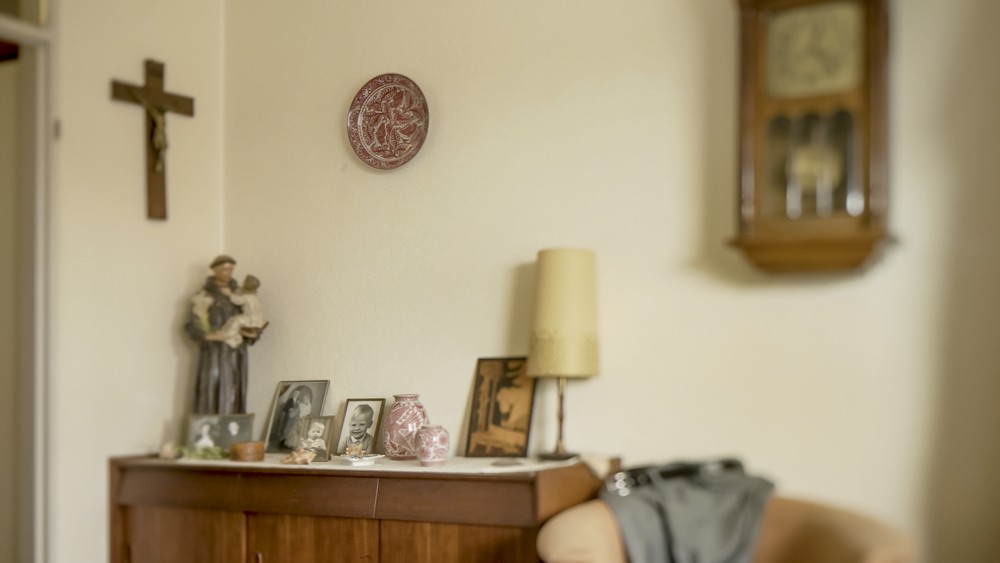Toni Hafkenscheid’s 3rd Act, the artist’s latest exhibition at Birch Contemporary, presents a filmic dirge on his exiled and aging father. While biographical evaluations of art have become less prevalent in modern critical and scholarly circles, such a reading is crucial to debunking the slow-burning mysticism of Hafkenscheid’s work. Presented in segments, which slowly unwind from their grainy beginnings into a more confrontational clarity, the artist uses his camera to paint a desolate portrait of a man on the brink of death, as well as highlight his own feelings of guilt.
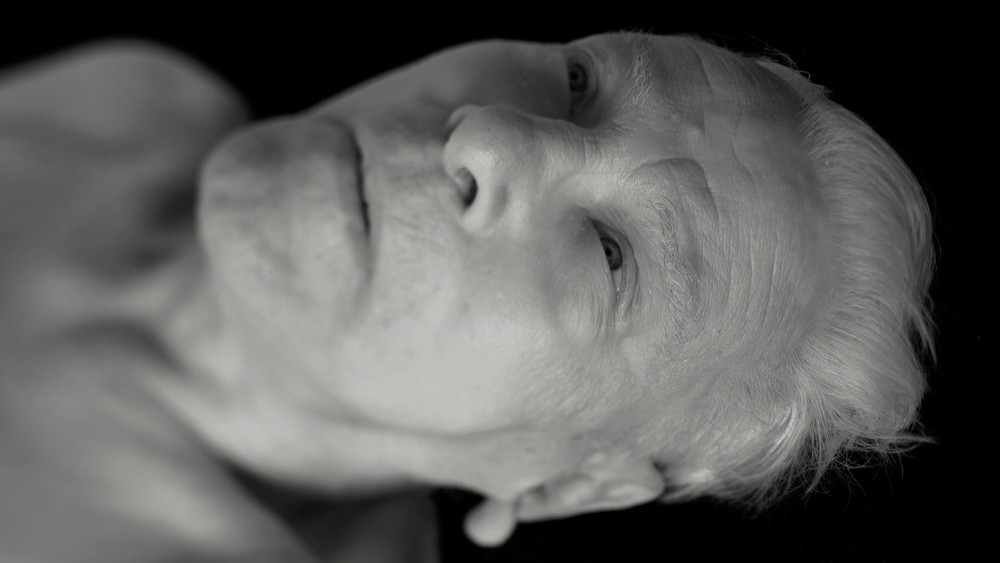 Toni Hafkenscheid, 3rd Act, 2017, still from 2-channel 4K video installation with sound
Toni Hafkenscheid, 3rd Act, 2017, still from 2-channel 4K video installation with sound
Hafkenscheid, a Rotterdam born artist, relocated to Canada in 2002 to begin his visual arts career, a decision that inevitably left his widowed father companionless. Throughout these pensive and static compositions, whether depicting his father’s somber and aged physiognomy, or his bantam accommodations in a nearby nursing home, a sense of remorse pervades. The accompanying exhibition text, written in first person prose by the artist himself, directly addresses the sorrow in abandoning his father during this particular point in his life, as they both live knowing that any passing day could be his last. Capturing these final moments in video form in turn solemnly commemorates his father, while looping each clip allows his image and likeness to feel as if they continue into infinity.
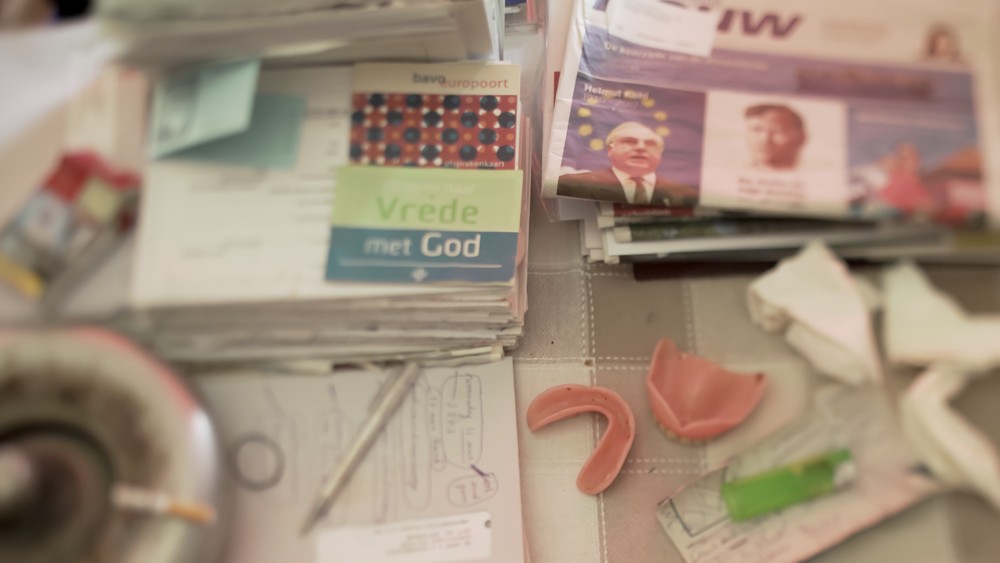 Toni Hafkenscheid, 3rd Act, 2017, still from 2-channel 4K video installation with sound
Toni Hafkenscheid, 3rd Act, 2017, still from 2-channel 4K video installation with sound
Hafkenscheid manifests a more universal emotional palette, allowing his personal project to resonate with a diverse group of individuals dealing with similar forms of unsettling liability over a particular situation. For those patient viewers willing to allow these gradually unfolding slices of cinéma vérité to infiltrate their psyche, a poignant portrayal of solitude and heartache lingers.
Concurrently shown alongside Hafkenscheid’s video installation is Andy Patton’s The In Vain Coloured Oriole and Other Paintings, a collection of large-scale paintings dripping with poeticism. Informed by ancient Chinese practices in calligraphy, these textual compositions read from top to bottom (akin to Classical Chinese) and from right to left (which is rooted in English linguistics). These compositions are drawn from re-contextualized snippets of poetry written by the artist in conjunction with Roo Borson and Kim Maltman. The artist anticipates that combining and reconfiguring stanzas from his previously published work will engender newly formed perspectives, opinions, and feelings to emerge throughout each canvas. The language used is often vague, which helps a viewer cast their own peculiar web of meaning between the cubic spaces separating each carefully considered word.
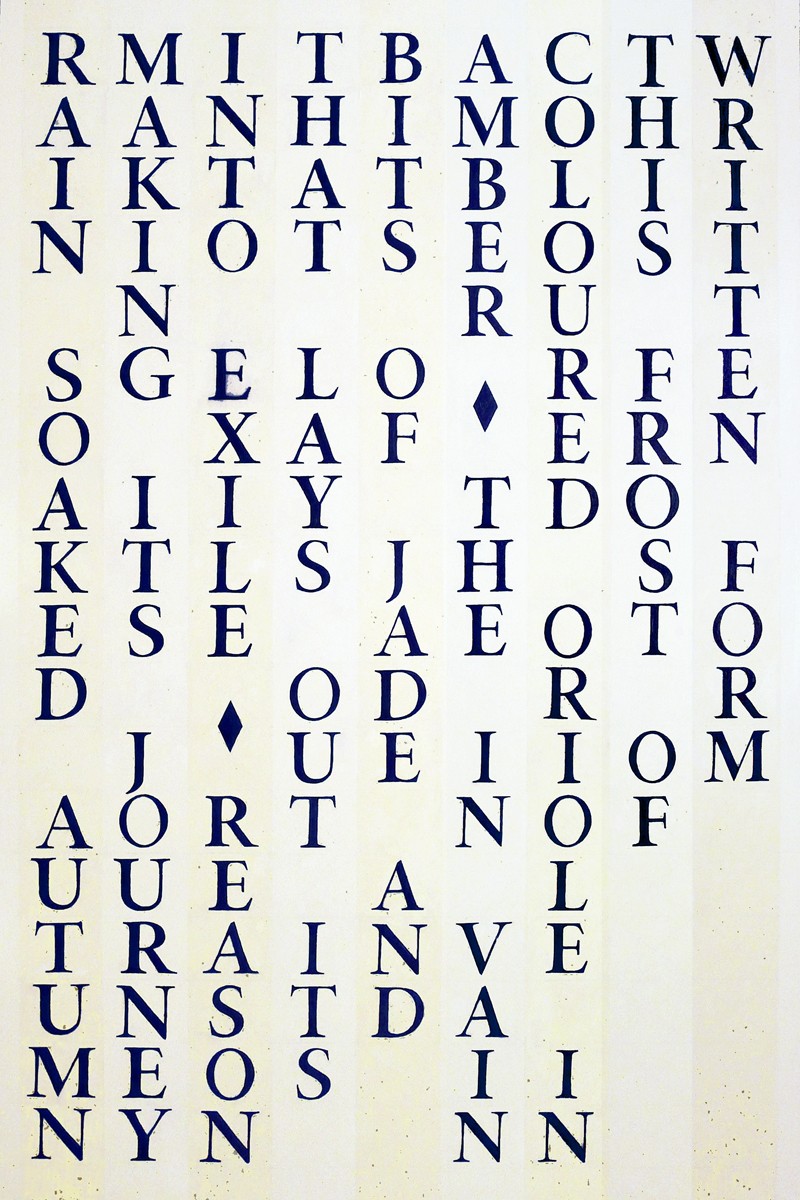 Andy Patton, The In Vain Coloured Oriole, 2017, oil on canvas, 72 x 48 inches
Andy Patton, The In Vain Coloured Oriole, 2017, oil on canvas, 72 x 48 inches
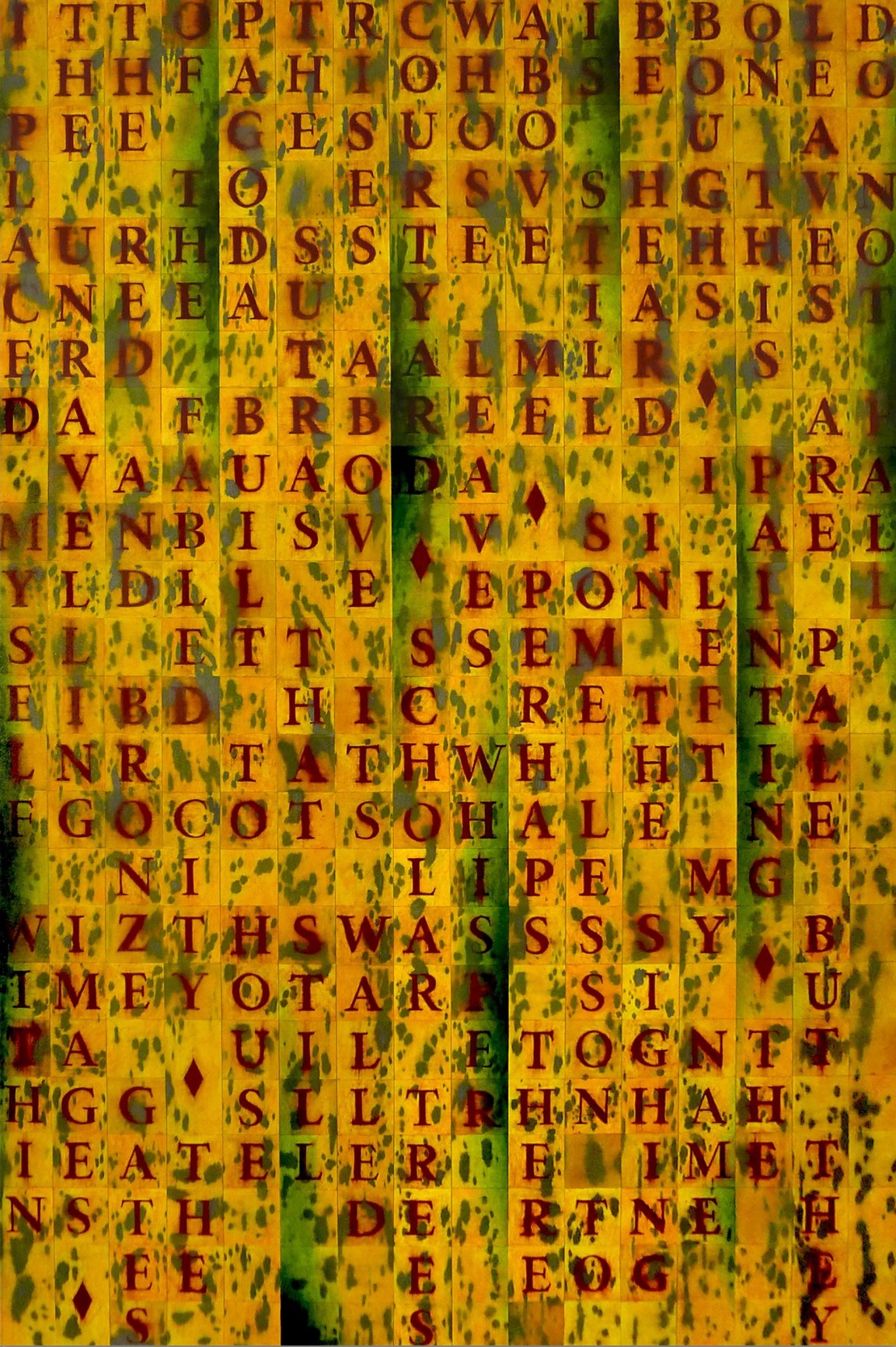 Andy Patton, Temple Ruins Park, 2014-15, oil on canvas, 72 × 48 inches
Andy Patton, Temple Ruins Park, 2014-15, oil on canvas, 72 × 48 inches
Patton’s work visually resembles the legendary oeuvre of Ed Ruscha, as well as the pithy aestheticism of Bob and Roberta Hansel; however, the originality of his own poetic musings singularizes his artistic endeavours amongst others informed by semiotics and the unending playfulness of language.
David Saric
Images are courtesy of Birch Contemporary
*Exhibition information: Toni Hafkenscheid, 3rd Act & Andy Patton, The In Vain Coloured Oriole and Other Paintings, November 30, 2017 – January 20, 2018, Birch Contemporary, 129 Tecumseth Street, Toronto. Gallery hours: Wed–Fri 10 am – 6 pm, Sat 11 am – 5 pm.

